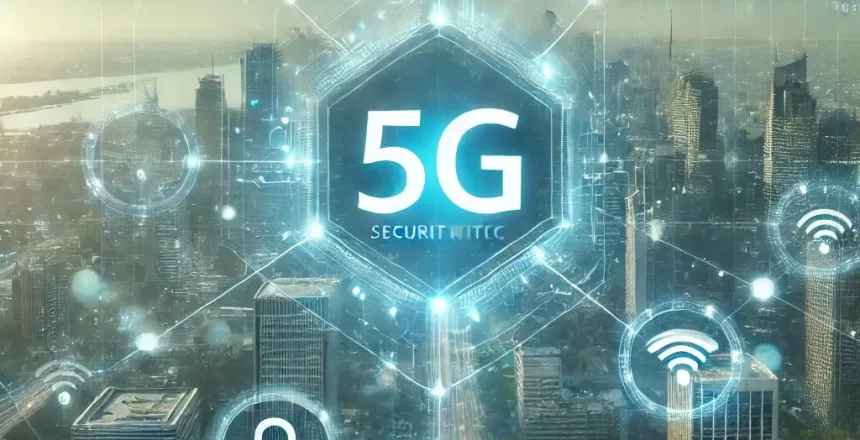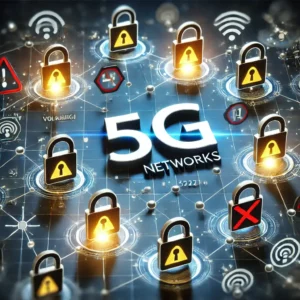5G technology’s impact on data and network security is transformative yet challenging.
While it boosts connectivity and enables vast IoT networks, it introduces complex security vulnerabilities.
From network slicing to edge computing, 5G’s innovations widen the scope for potential threats and raise urgent questions about safeguarding data.
This article delves into these security challenges and explores effective strategies to protect against emerging risks, offering a balanced view of 5G’s potential and the proactive measures essential to secure this next-generation network.
What Sets 5G Apart from Previous Generations
5G’s advancements go beyond faster mobile speeds; it fundamentally reshapes connectivity, delivering ultra-low latency, higher bandwidth, and the ability to support millions of devices per square kilometer. Unlike 4G, which focused on better mobile browsing and video streaming, 5G enables innovations like real-time data processing, essential for industries embracing IoT, autonomous systems, and smart cities.
Network Slicing is a core feature, allowing operators to create multiple virtual networks within the same physical infrastructure, each tailored for specific use cases. For example, low-latency slices can serve real-time applications like remote surgery, while high-reliability slices support autonomous vehicles. This flexibility allows 5G to meet varied demands but opens new security risks, as different slices may have different vulnerabilities.
Edge Computing reduces data travel time by processing information closer to its source, crucial for real-time decision-making in IoT and AI-driven applications. However, decentralizing data storage and processing also creates multiple access points, which require strict security protocols to prevent breaches.
Finally, Massive IoT Connectivity is a key differentiator, as 5G can connect up to a million devices per square kilometer. This capacity allows for the expansion of IoT in industries such as manufacturing and agriculture, but it also increases potential entry points for cyber threats. With each additional device, the importance of secure authentication and data protection becomes paramount.
The innovations in 5G enhance productivity and enable groundbreaking technologies, but they come with increased security challenges that previous generations did not face. If you’re curious about the specific ways these shifts impact IT infrastructure, our recent post on “The Future of Networking and Data Security: Key Trends” dives deeper into these challenges.
Core Innovations in 5G Technology
The 5G network architecture introduces several groundbreaking innovations that transform connectivity and data handling. Here’s a look at three main advancements:
- Network Slicing
5G supports diverse applications through “network slices,” which are virtual networks customized for specific uses, like high-speed slices for video streaming and low-latency slices for autonomous driving. While this flexibility enhances functionality, each slice may require tailored security measures.
- Edge Computing
By processing data closer to its source, 5G’s edge computing reduces latency, enabling real-time analytics critical for IoT and smart cities. However, decentralizing data also broadens the attack surface, necessitating robust security at each access point.
- Massive IoT Connectivity
Supporting millions of devices per square kilometer, 5G vastly expands IoT possibilities. This innovation boosts efficiency in sectors like healthcare and logistics, though it also increases the potential for device-based cyber threats, emphasizing the need for rigorous authentication and encryption protocols.
These core innovations enable rapid advancements across industries, but they also pose complex security challenges, as more devices and decentralized data points call for heightened cybersecurity measures.
Potential Security Vulnerabilities in 5G
While 5G enables unprecedented connectivity, it also introduces new security vulnerabilities:
- Expanded Attack Surface
The sheer volume of 5G-connected devices, from smartphones to IoT sensors, significantly increases potential entry points for attackers. Each connected device becomes a potential weak link, requiring rigorous endpoint security to prevent breaches. - Complex Decentralized Architecture
With edge computing and network slicing, 5G decentralizes data processing, spreading it across multiple locations rather than central servers. This complexity increases the risk of data interception and poses challenges for consistent security oversight across networks. - Device Proliferation Risks
Massive IoT support means 5G can connect millions of devices, but many IoT devices lack robust security protocols. This opens the door to risks like distributed denial-of-service (DDoS) attacks, where compromised devices are used en masse to disrupt networks. - Privacy Concerns
The ability of 5G to track user location and behavior more precisely than previous networks raises significant privacy concerns. Malicious actors or even unauthorized third parties could misuse this data if not adequately protected.
As 5G expands, these vulnerabilities highlight the importance of proactive security measures, like encryption, strong authentication protocols, and vigilant network monitoring, to secure sensitive data and prevent cyberattacks.
Examples of Emerging Security Challenges
With 5G’s rapid adoption, new security challenges emerge across various sectors:
- Cyberattack Scenarios
5G’s broader attack surface creates openings for attacks like man-in-the-middle (MitM), where hackers intercept data as it travels between devices, especially in edge computing environments.
- Privacy Vulnerabilities
The granular data collected by 5G can reveal detailed personal information. Unauthorized tracking could compromise user privacy on a large scale.
- Threats to National Infrastructure
As 5G integrates into critical infrastructure, a breach could impact energy, healthcare, or transportation, threatening public safety.
These examples underscore the need for proactive security, especially as 5G scales across industries.
Strategies for Strengthening 5G Security
To address 5G’s unique security risks, companies and governments are implementing robust strategies:
- Enhanced Encryption Protocols
Advanced encryption ensures data is secure across network slices and in edge computing environments, protecting against interception. - Strengthened Authentication Mechanisms
Multi-factor authentication (MFA) and device identity verification reduce the risk of unauthorized access, especially as more IoT devices come online. - Collaboration and Regulatory Standards
Industry standards and collaboration between regulatory bodies, tech companies, and governments help establish unified security guidelines, keeping 5G networks resilient against emerging threats.
These measures underscore a proactive approach to security, helping to mitigate risks as 5G technology becomes more integral to daily life and industry.
Future Outlook for 5G Security
As 5G expands globally, its security will require adaptive, proactive measures. Emerging technologies like artificial intelligence (AI) and machine learning (ML) will likely be key in threat detection and real-time response, especially in sectors relying on IoT and edge computing. AI could analyze patterns across millions of devices, identifying anomalies and blocking attacks instantly.
The rise of zero-trust architecture—where devices are continually authenticated and verified—is also expected to enhance security across 5G networks. This approach, alongside collaboration between governments and private sectors, can standardize security protocols, enabling faster adaptation to new threats.
In addition, regulatory advancements will be essential. Many countries are already establishing guidelines for 5G security standards, paving the way for unified policies that strengthen global networks. These combined efforts—intelligent technology, continuous authentication, and regulation—will help shape a secure 5G landscape capable of supporting future digital infrastructures.
Conclusion
The impact of 5G technology on data and network security is transformative but comes with significant challenges.
While 5G opens the door to groundbreaking connectivity and smart solutions across industries, it also requires new approaches to manage vulnerabilities.
From network slicing to edge computing, each innovation brings unique risks that demand enhanced encryption, robust authentication, and international security standards.
As we embrace 5G’s potential, staying informed and adopting proactive measures will be essential to safeguard data, privacy, and infrastructure in a hyper-connected future.









